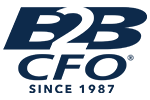
How Do You Fix A Broken Accounting System
Posted on March 21, 2020 by Randal Suttles
Many years ago, when I was CFO of a mid size but fast growing insurance company, we broke the payment system. It didn’t really break, it just quit. We were growing so fast that the number of payments needed to move through the system could not be physically input and spit out with a check, just because the hardware and software were no longer sized right. The processors would just lock up. It was horrible.
Solution: we visited an insurer that was processing volumes higher than ours who had purchased a standard industry software package, and then customized it. They were very pleased with it. The package cost $50,000. That was a lot back then for this kind of software. The problem was it had taken the company over 18 months to customize and install. But, once done, they were very pleased. It did all of the unique and company specific tasks on the payables, the checks, and the accounting that they wanted. But, I didn’t have 18 months. I had none. We could not get checks processed, right now, let alone 18 months from now.
We bought the package in November and told the vendor we wanted it live by January 1. The vendor said that was impossible and would not warranty it. No matter. We bought it. We were out of time and out of alternatives. We installed it ourselves, with a lot of help from our in house data processing folks.
I put in two rules: we will use the software package from the vendor with standard settings and standard forms, standard input and output. No customizing until after we were operational. Second rule: no changes in the input forms or interfaces from any company department requesting payments and no change in output formats (accounting coding, output reports, timing, etc). This new accounting software would be a black box to the user departments. They would send in what they always did, and the accounting department would send back the same data it always did. All of the burden to make the software work would be borne by the accounting staff. I told them once it was operational, we would customize it all anybody wanted.
We were operational January 1. Six weeks. Unheard of. One thing happened that I thought might, but was not counting on. I thought that once the staff began using the software with standard settings, when it came time to customize, they might not want to. I was right. Once they learned the standard package, they were content.
What does this mean with current accounting, ledger, processing and reporting systems? All too often the users demand massive customization up front. That is expensive and time consuming. The logic is, if we are going to suffer through this system conversion, we best make it do what we want, because we don’t want to suffer it again. I think that’s the wrong approach, and my experiences have borne it out.
It is often best to take up the software package using standard set ups. They are built to be easy and cover most needs. Once operational, customized changes can be done in an orderly and modular way. What really happens is the users do customize, but not as much as you might expect.
Standard accounting packages like QuickBooks and Peachtree all come with preset financials, charts of accounts, invoicing forms, etc. I recommend clients start with the prepackage and customize up front only the bare minimum. Get used to the system. Then make it fit like a glove to your unique company. You will be surprised how little needs to changed. It is the easiest and cheapest way to start with a new system.
Get Started With Randal
Get Your own complimentary* Discovery Analysis™ from B2B CFO®
*Complimentary for qualified business owners
